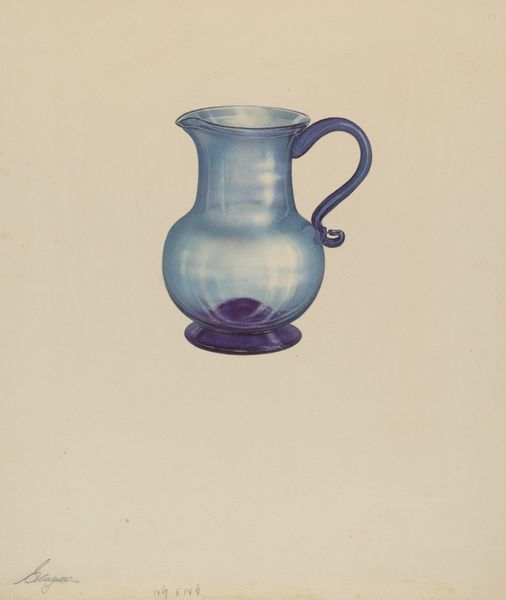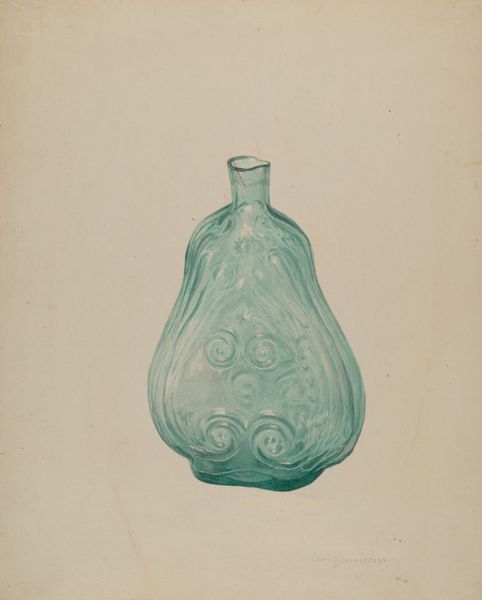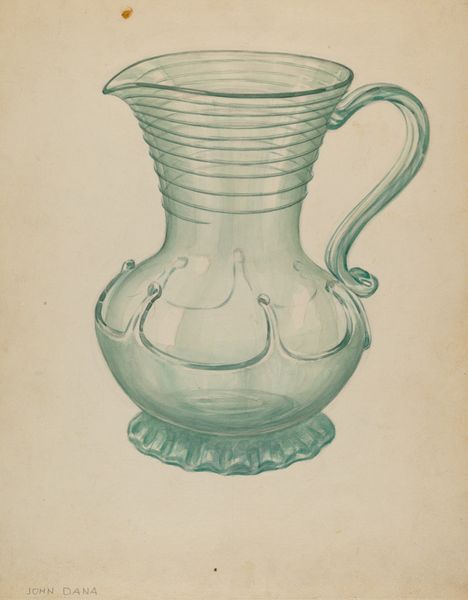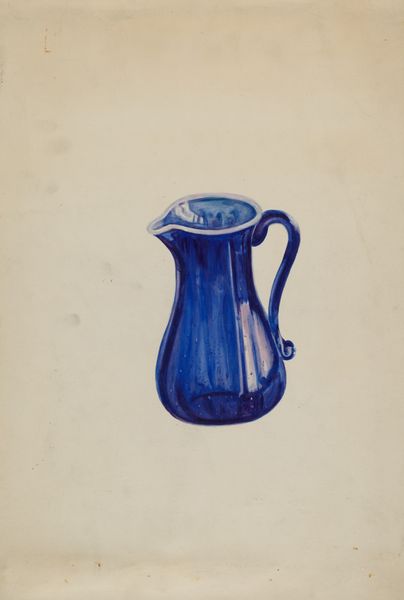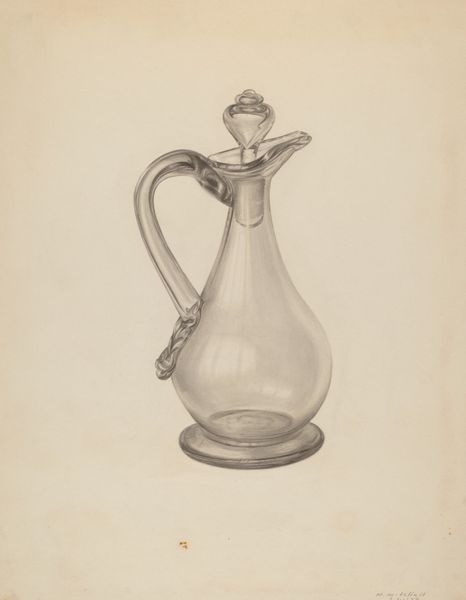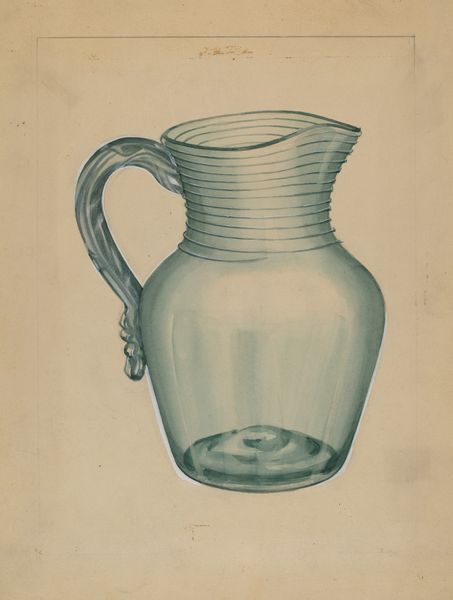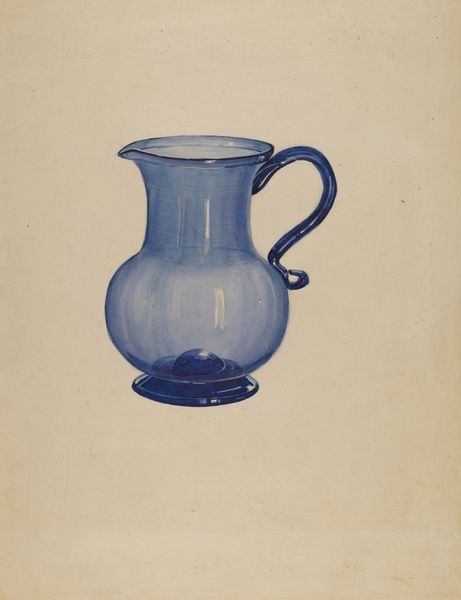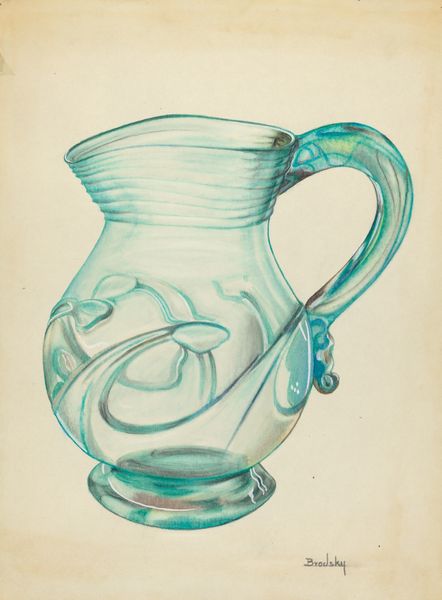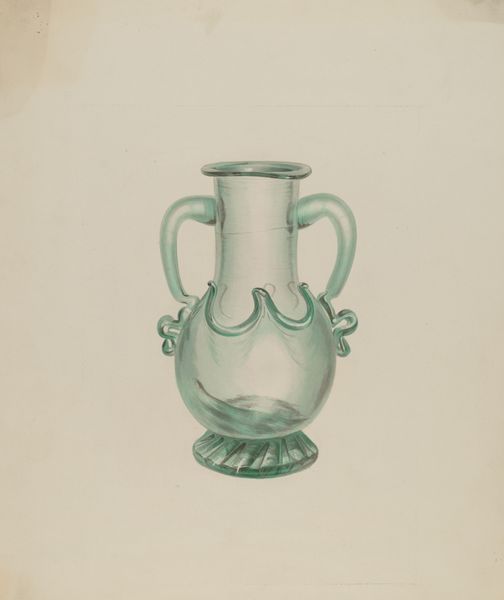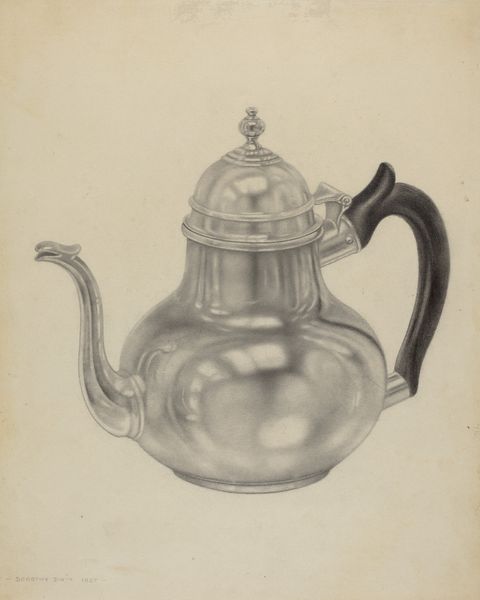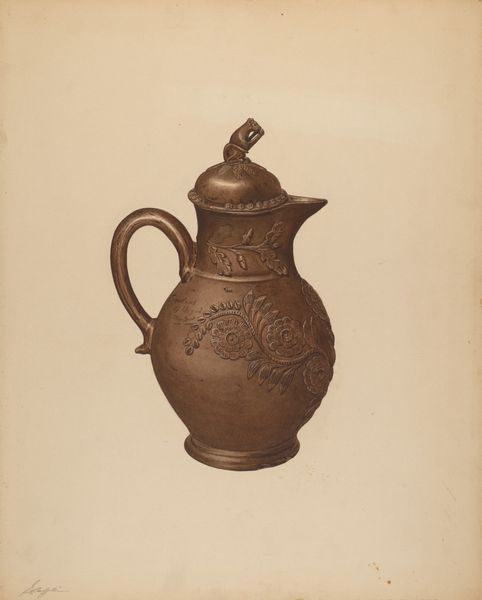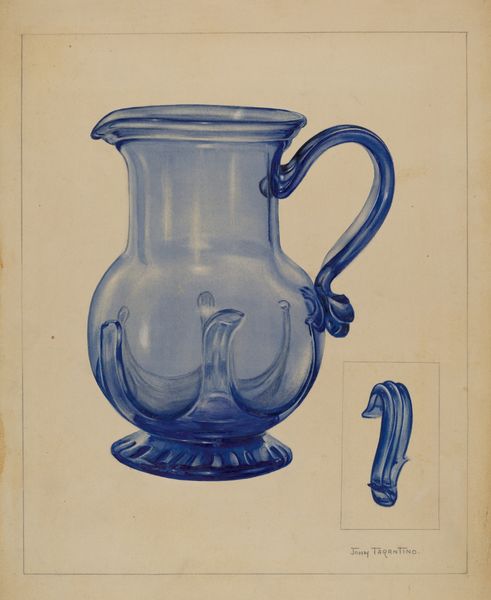
drawing, painting, watercolor
#
drawing
#
painting
#
watercolor
#
watercolor
#
realism
Dimensions: overall: 28.1 x 22.9 cm (11 1/16 x 9 in.)
Copyright: National Gallery of Art: CC0 1.0
Curator: Ralph Atkinson's "Vinegar Cruet," created circa 1936, presents an elegant rendition of a domestic object using watercolor on paper. Editor: The immediate impression is of coolness, isn’t it? The transparency of the blue glass is remarkably rendered. But also, the formalism of the piece creates distance; there's a deliberate separation of the object from its ordinary use as something within a specific socio-economic context. Curator: Indeed, the painting showcases a mastery of realism, emphasizing the interplay of light and shadow across the object's intricate surface. Notice how the artist captures the varying textures of the glass. It's fascinating from a purely formal perspective. Editor: Absolutely, the artist's technique creates a visually appealing aesthetic that speaks of class and aspiration. Looking at its vintage one could say its subject places the work within a longer conversation about class, material consumption and its cultural status at the time, which had deep consequences concerning gender and taste-making. Who did have this cruet, and why? Curator: You bring up an excellent point. Yet, let’s look at the use of form here. The drawing makes use of the curvature, balancing it between line, volume and light. I believe that what stands out is Atkinson’s clever use of line, volume and light as compositional structures. The use of transparency offers complexity by making us notice our own way of seeing—which affects how we value, understand and consume. Editor: However, considering it’s the 1930s and the burgeoning field of consumer culture, could it also indicate an era where objects began carrying weight beyond utility, where they reflect and shape identity and gender dynamics? It brings us to questions of value and aspiration that resonate even today. Who is this painting *for*? And why should we be showing this artwork now? Curator: Ultimately, whether viewed through the lens of formal analysis or social commentary, "Vinegar Cruet" provides an engaging exploration of the aesthetic possibilities inherent in everyday objects. Editor: I agree. The visual rendering creates interesting lines between private life, consumption, gender roles and the aspirations within art itself. It gives a unique glimpse into our cultural construction.
Comments
No comments
Be the first to comment and join the conversation on the ultimate creative platform.
